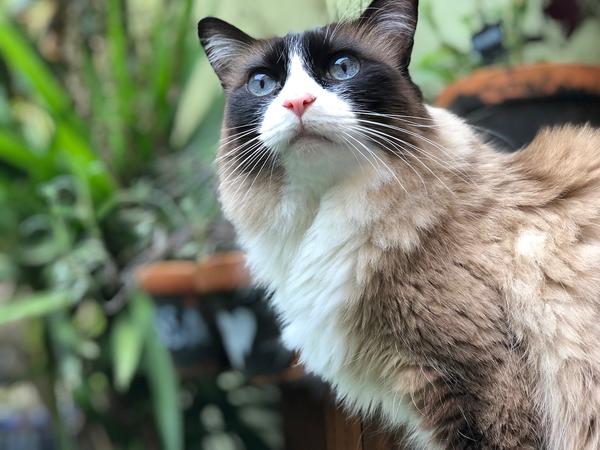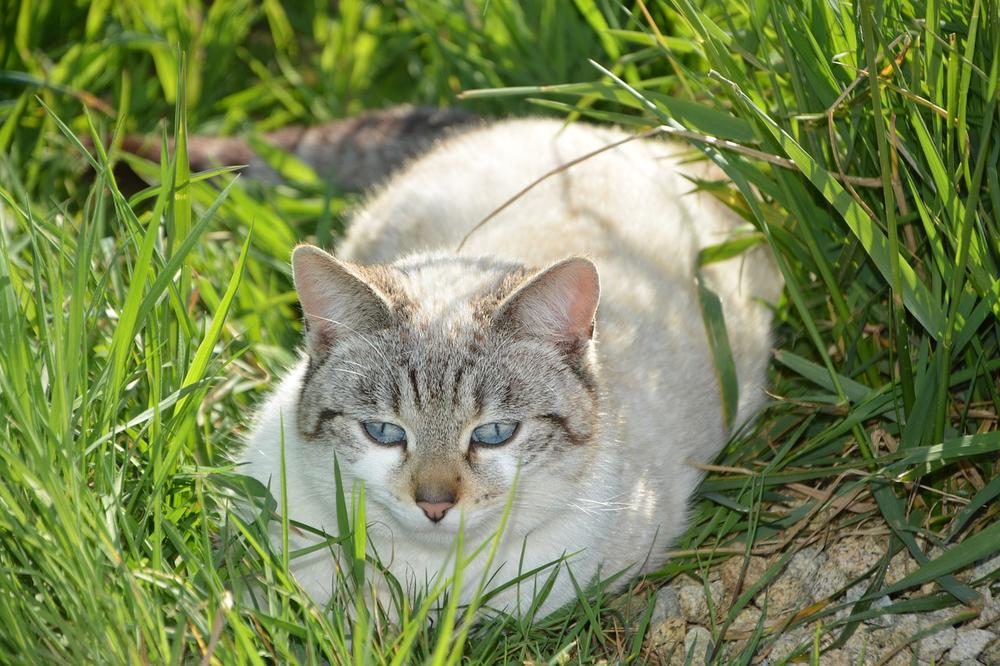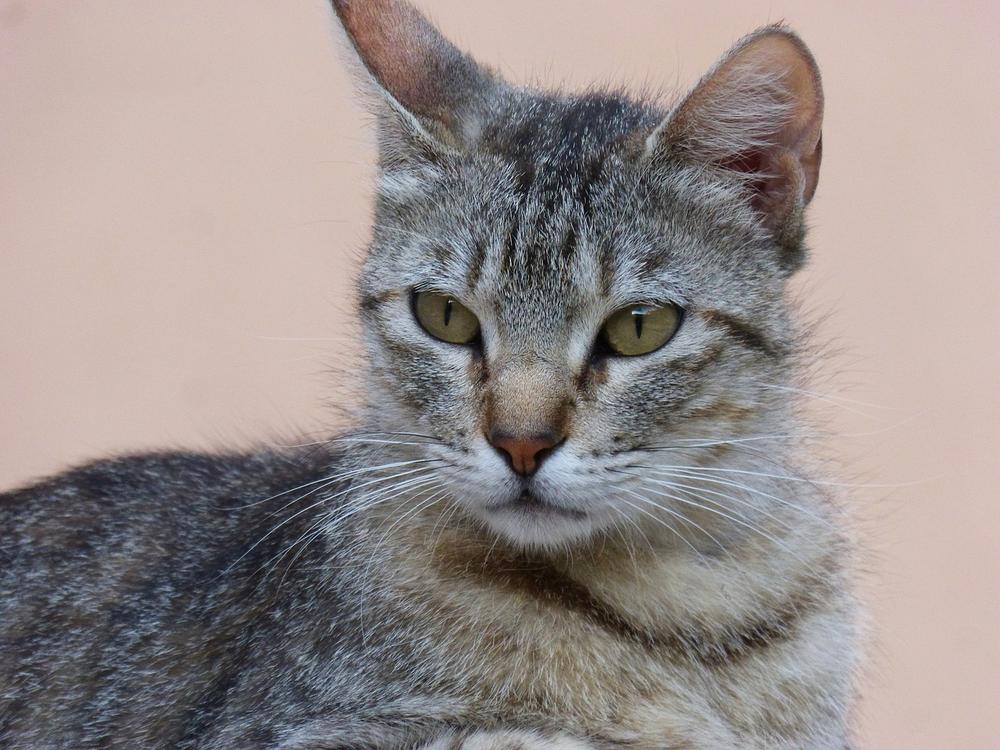Why Is Your Female Cat 'Meowing' So Much? (Possible Reasons)

Visualize this:
Your female cat is meowing up a storm, driving you to the brink of madness. 😱
Is she trying to communicate something important?
Or is she just messing with your head?
Don't fret, because I've got the answers you seek.
Keep reading.
Addressing Behavioral Issues That Can Lead to Excessive Meowing in Female Cats
To stop your female cat from meowing too much, try these strategies:
- Give them mental stimulation through puzzle toys and interactive games. Keep their minds busy and ward off boredom.
- Check for any underlying health issues that may be causing the excessive meowing, like hyperthyroidism, stress, or pain.
- Keep a log book to track patterns and triggers of meowing. It'll help you figure out the cause and find appropriate solutions.
- If they're meowing excessively, address specific needs like fear, hunger, thirst, or loneliness. Take care of these things so they don't feel the need to meow.
- Stick to consistent daily routines to make your cat feel secure. This will reduce anxious or confused meowing.
- Don't punish your cat for meowing, and don't give in to their demands while they're making noise. Wait until they're quiet before meeting their needs.
- Use feeding time to reinforce calm behavior. Only feed them when they're quiet to discourage meowing just for food.
- Make sure to give your cat attention and playtime every day. This prevents boredom and reduces meowing for attention.
- If your cat is lonely, consider getting another cat as companionship. Having a friend can reduce isolation-induced meowing.
- Stray cats you adopt might struggle with anxiety from past experiences. Provide mental and physical stimulation to help them settle down and feel happier.
Improving your cat's overall well-being by attending to their individual needs and following these suggestions will result in less meowing.
Main points I'll expand upon further down this article:
- Female cats use meowing to communicate with humans and convey their needs.
- Meowing frequency and reasons vary among breeds and individual cats.
- Understand and respond to your cat's meowing to effectively communicate.
- Diseases and stressors can cause excessive meowing in cats.
- Interactive play sessions and enrichment activities can help reduce meowing.
- Calming pheromones, nightlights, and heated beds provide comfort for cats.
- Ignore cries for food or treats and maintain a clean litter box.
- Spaying or neutering can eliminate excessive meowing associated with mating behavior.
- Seek veterinary attention if necessary and ensure proper hydration.
- Kittens may meow more frequently, but monitor for discomfort after spaying.
Now that we've covered some practical strategies to address excessive meowing in female cats, let's dive deeper into understanding their meows and how they use vocalizations to communicate their needs.

You won't believe how much you can learn by paying attention to their body language and listening closely!
Understanding the Communication Methods of Female Cats and How It Relates to Excessive Meowing
Understanding how female cats communicate through meowing is crucial for cat owners.

By paying attention to their accompanying body language, we can better interpret their needs or desires.
- Observing tail position, ear posture, and facial expressions helps determine the context behind excessive meowing.
- Meowing serves as a powerful form of communication, particularly between female cats and humans, enabling interaction and expressing their needs and desires.
- Kittens meow to convey their needs to their mother, while adult cats use meowing to greet, request something, or signal distress.
- Frequent meowing can indicate a cat seeking attention, or even simply enjoying the sound of their meows.
- Effective cat communication involves understanding and responding to vocalizations and body language, using a baby voice to bond with them, and avoiding punishment.
- Different breeds and individual cats may have variations in meowing frequency and reasons, so it’s essential to learn your cat's unique communication style.
- Furthermore, certain cat breeds like Siamese possess distinctive meowing characteristics, carrying specific meanings that aid in interpreting cat communication.
Cat owners can enhance their connection with their feline companions and guarantee their requirements are fulfilled through comprehending these factors. 😺
And yet, despite understanding the communication methods of female cats, you may still find yourself wondering why your own feline companion continues to meow excessively.
Well, let's dive into some possible reasons and solutions that can help address this issue:
Identifying and Managing Stressors That Can Trigger Excessive Meowing in Female Cats
Reducing stress and minimizing unnecessary meowing in cats when faced with new people or changes in their environment requires gradual introductions and desensitization techniques.
In older cats, excessive meowing may be a symptom of diseases like an overactive thyroid or kidney disease.
Fear-related meowing can be triggered by thunderstorms, loud noises, or the presence of another animal.
On top of that, female cats may experience increased meowing due to stressors such as meeting new people or adjustments in their surroundings.
Understanding these underlying causes and employing appropriate strategies can help alleviate meowing issues, ensuring a calmer and happier feline companion.
Tips for Creating a Calming Environment to Reduce Excessive Meowing in Female Cats
If your female cat is meowing excessively, don't worry, there are some tips you can try to create a calming environment for her.
- Utilize a calming pheromone diffuser in the area where your cat spends most of her time. These diffusers emit synthetic cat pheromones that mimic the natural facial pheromones cats use to communicate and feel calm.
- Engage in regular interactive play sessions with toys and furniture to help release your cat's energy. This will not only keep her entertained but also reduce anxiety and meowing.
- Provide enrichment items such as scratching posts and puzzles to keep your cat mentally stimulated and prevent boredom or restlessness.
- Consider using nightlights and providing a comfortable heated bed for older cats. These can provide comfort and ease their anxiety, leading to fewer meowing episodes.
- Ignore your cat's cries for food or treats if she is meowing excessively for them. This will discourage attention-seeking behavior and gradually decrease meowing.
- Play with your cat before bedtime to tire her out, promoting a more peaceful night's sleep for you both.
- Ensure that your cat's litter box is clean and in an easily accessible location to avoid any stress or frustration.
- If excessive meowing persists, it may be wise to seek veterinary attention to rule out any underlying health issues or discomfort.
To establish a tranquil and comforting atmosphere for your female cat and foster her overall welfare, implement these practical suggestions which can diminish excessive meowing.
In addition to the tips mentioned above, I want to emphasize the importance of understanding your newly adopted cat's incessant meowing.
It can be an overwhelming and perplexing experience, but rest assured, I've got you covered.
If you're seeking answers and practical solutions to address this behavior, I invite you to explore my blog post, uncorking a world of insights and guidance.
I Just Adopted a Cat and It Won't Stop Meowing is your compass in navigating through the complexities while offering valuable assistance to help ease your concerns and provide much-needed solace.
Exploring Hormonal Changes and Their Impact on Excessive Meowing in Female Cats
Neutering female cats during their mating season
So, let me tell you something interesting about female cats. When it's their time of the year to search for potential mates, they tend to meow a lot. I mean, a lot.
And let me tell you, it can get really annoying.
But fear not...
There is a solution to this meowing madness.
It's called neutering.
You see, when you neuter your female cat during her mating season, it effectively reduces that excessive meowing that comes along with the urge to attract potential mates. By eliminating those hormonal fluctuations, you're basically telling your cat, "Hey, calm down, you don't need to scream your lungs out."
Spaying or neutering to eliminate excessive meowing
Adult female cats can be quite vocal during the breeding season. It's like a meowing symphony happening in your home. But you know what?
You can put an end to this meowing madness by spaying or neutering your cat.

By doing so, you're eliminating that excessive meowing behavior tied to mating.
No more yowling and screaming at each other, trying to find that elusive mate.
Just peace and quiet.
Ah, the bliss!
The benefits of spaying female cats in heat
Now, listen up. If your female cat is in heat, she might engage in some serious meowing to attract the attention of potential mates. It can drive you crazy, trust me.
But here's the good news:
Spaying can help resolve this meowing issue. By spaying your female cat, you're putting an end to the hormonal changes that drive her to meow excessively. It's like pressing the mute button on all that meowing.
Peace will reign once again in your cat-filled household.
Oh, and remember, if you've recently spayed your furry friend and notice any concerns or signs of discomfort or pain, it's always a good idea to seek veterinary guidance.
Better safe than sorry, right?
And that wraps up today's article.
If you wish to read more of my useful articles, I recommend you check out some of these: Why Doesnt My Cat Cuddle With Me, Why Do Female Cats Roll Around After Mating, Cat Sleeps With Eyes Open, and Why Does My Cat Meow When I Pick Her Up
Talk soon,
-Sarah Davis